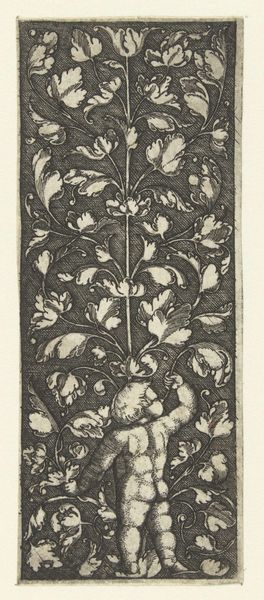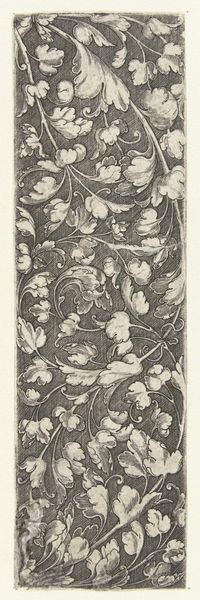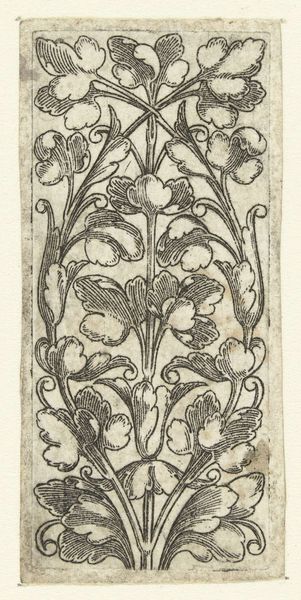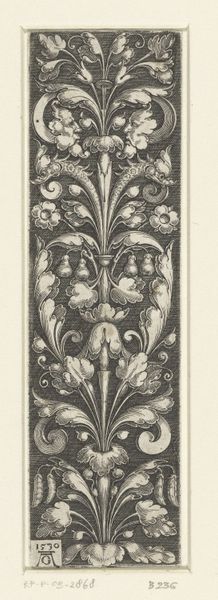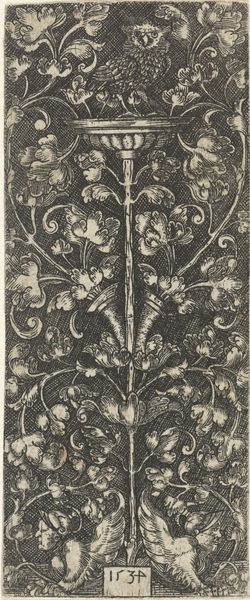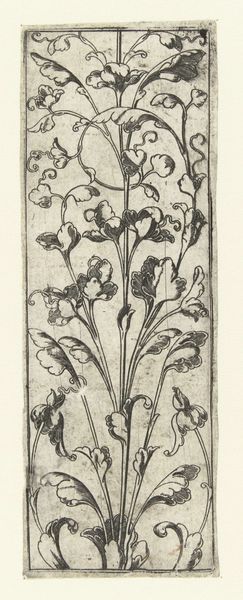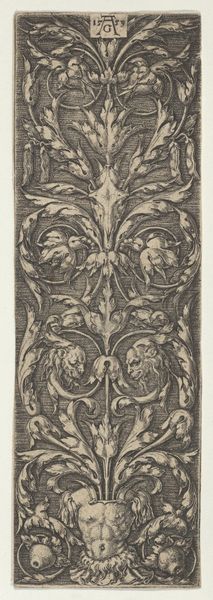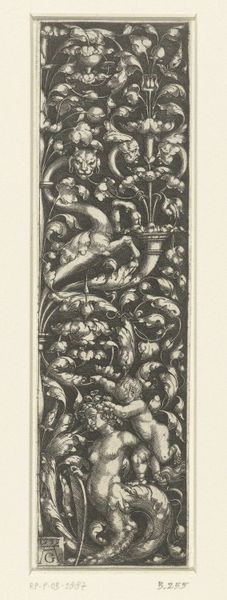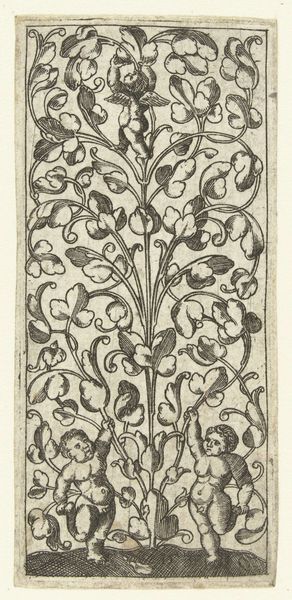
ornament, print, engraving
#
ornament
#
allegory
#
pen drawing
# print
#
figuration
#
11_renaissance
#
line
#
history-painting
#
engraving
Dimensions: height 107 mm, width 50 mm
Copyright: Rijks Museum: Open Domain
Curator: Welcome. We're looking at "Ornament met personificatie van de Gerechtigheid," an engraving made in 1538 by the German artist Monogrammist AS. It portrays an allegorical figure of Justice intertwined with intricate floral ornamentation. Editor: Wow, it's so dense! All those leaves and flowers—it feels like peering into a secret garden where even justice has to fight its way through the undergrowth. There's a feeling of confinement. Curator: Well, engravings like these weren’t always meant for grand display. They were often produced as model books for artisans. Jewelers, goldsmiths... they'd use these images as inspiration for their own work. Consider how readily such designs could be adapted to jewelry. Editor: So, like a sixteenth-century Pinterest? I love the idea of someone rocking a serious Justice-themed pendant back then. But does this tight composition, this sense of things pressing in, tell us something about justice at the time? Was it seen as restricted, maybe? Curator: The presence of Justice, bearing her sword and scales, certainly spoke to the importance of law and order within society. Justice was perceived as a virtue, necessary for maintaining social equilibrium. We need to be careful in reading too much negativity into this print; we should look for something that serves an overtly practical purpose. Editor: True. But still, that sword is quite prominent. The detail and those meticulous lines – the artist's certainly telling a story. To me the detail of her intense gaze, together with her stern demeanor, gives this allegorical image some serious weight. And, of course, everything framed by that dense foliage makes the figure look more imposing. Curator: You're right, this image might also have served to remind the viewer of justice's ever-present power. It reflects Renaissance ideals by intertwining classical allegories with meticulous ornament. Editor: Okay, now I see the dual purpose - ornamentation and heavy morality lesson - a sixteenth-century multitasking masterpiece. Curator: Exactly! The function of an image is a powerful thing. Editor: And now that you've pointed that out, it's much more engaging! Thanks!
Comments
No comments
Be the first to comment and join the conversation on the ultimate creative platform.
